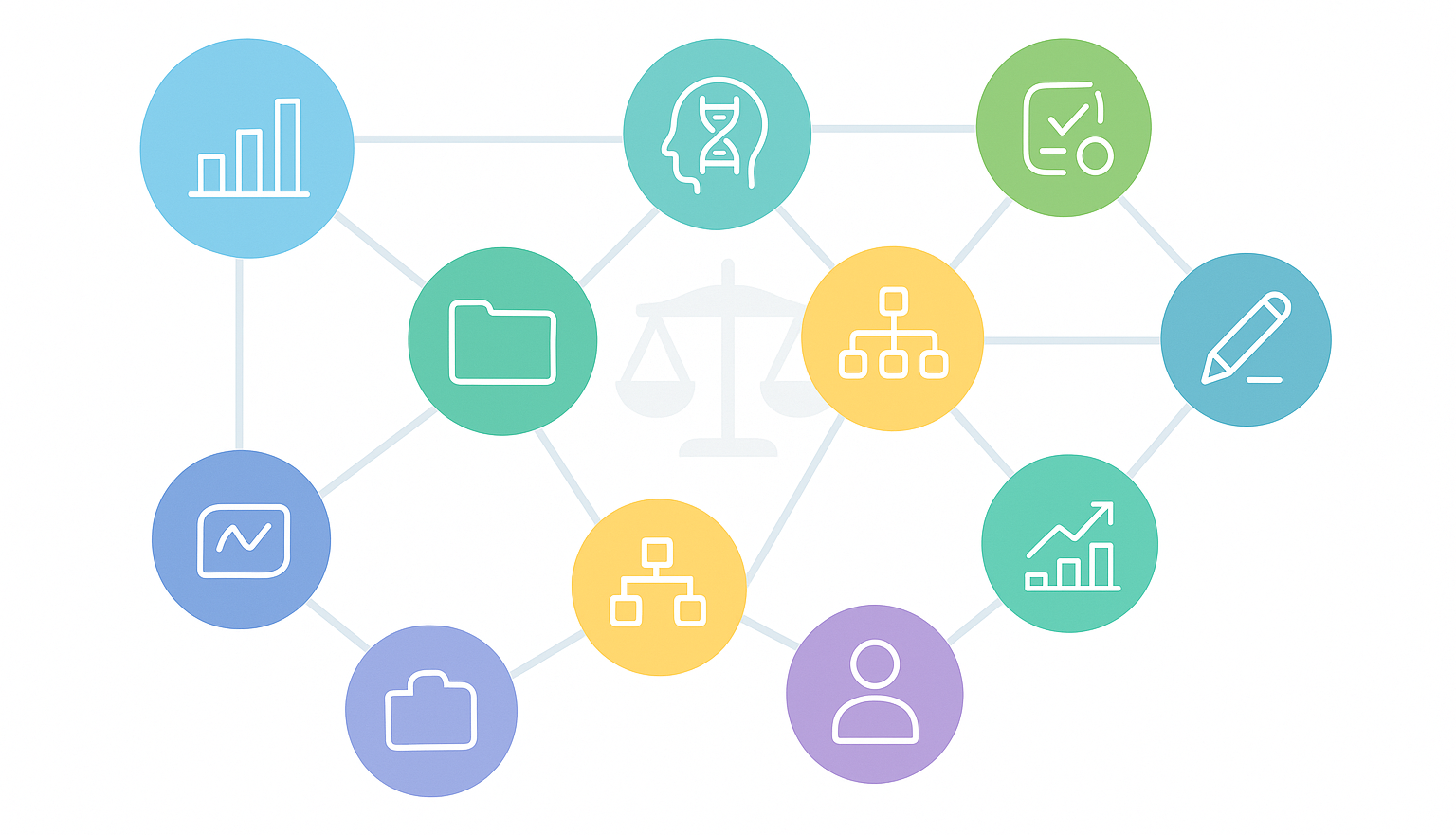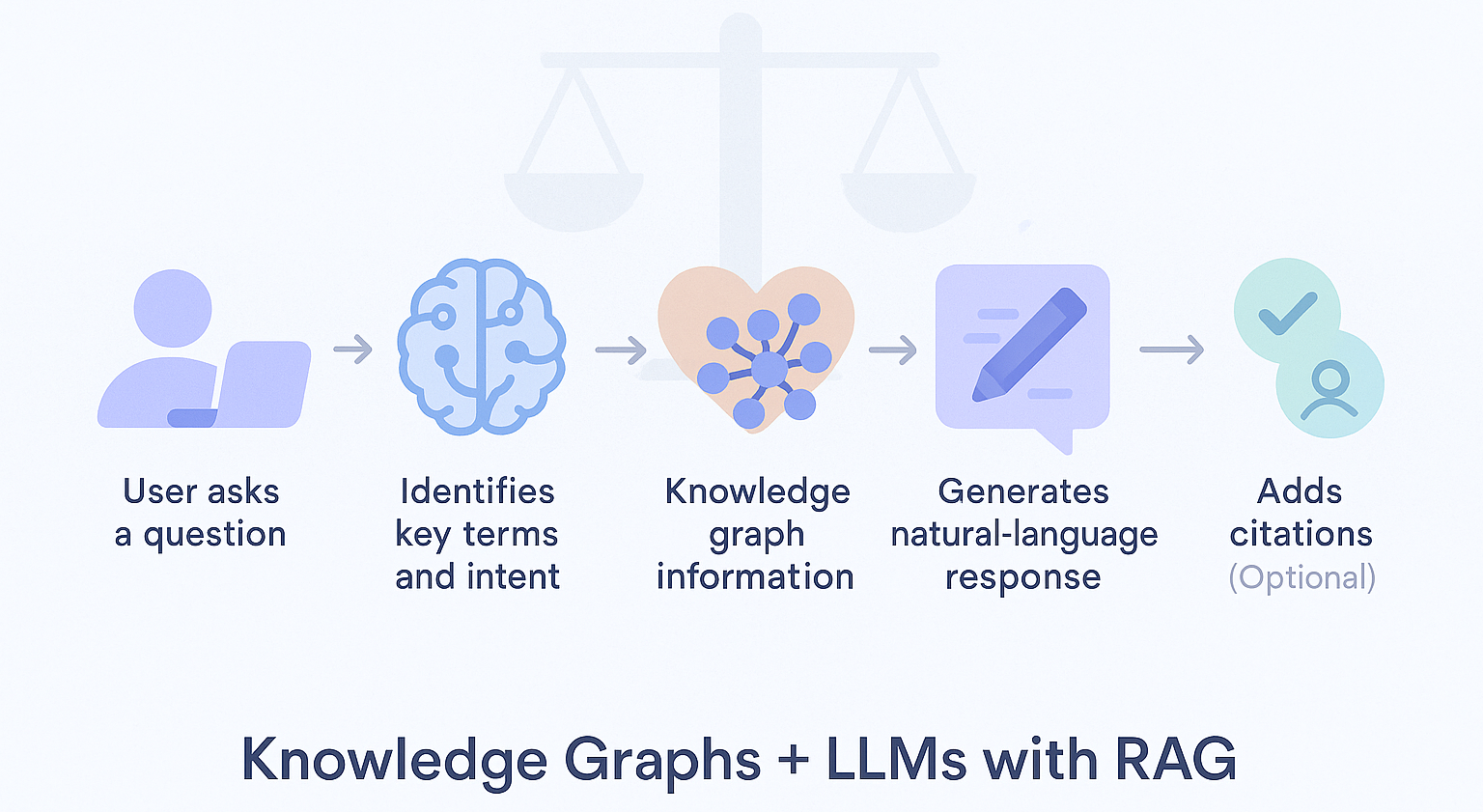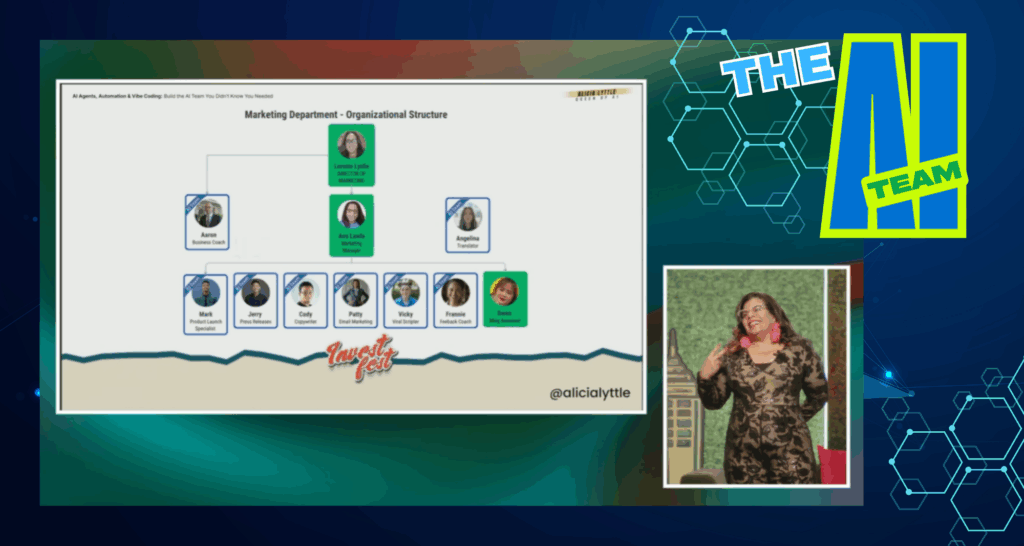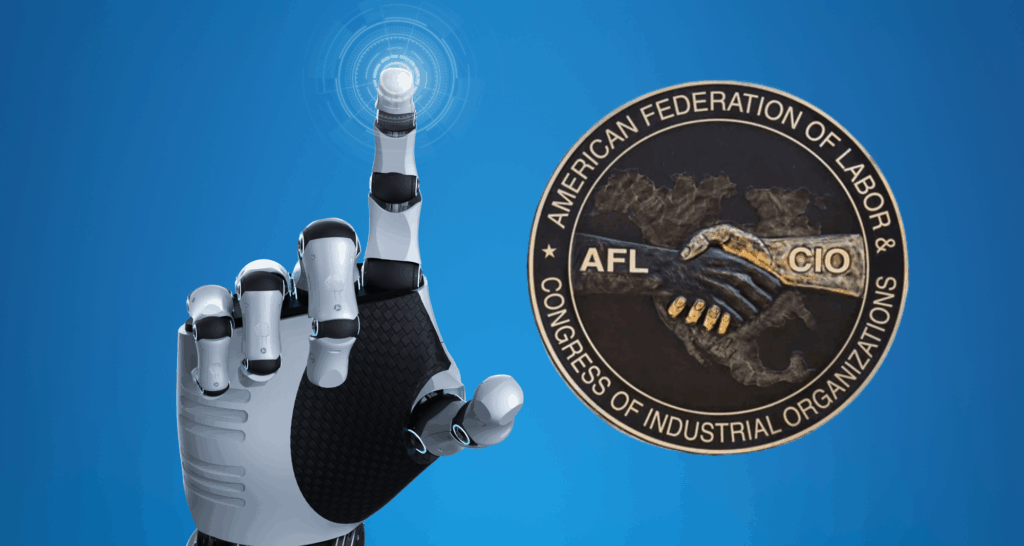Knowledge Graphs and LLMs: The Smartest Way to Make AI Work for Business
Unlock the Full Power of AI by Connecting What It Knows to What Your Business Needs. Discover How Knowledge Graphs and LLMs Are Reshaping Enterprise Intelligence.
The Problem with “Smart” AI? It Doesn’t Know Your Business
AI is everywhere—writing content, summarizing emails, answering questions. But ask it something specific about your business, and suddenly that “smart” system is guessing.
That’s because tools powered by large language models (LLMs), such as ChatGPT or Claude, are trained to generate plausible-sounding responses, rather than understanding the intricacies of your business, products, or internal systems. They know language. But they don’t know your world.
That’s why forward-thinking organizations are now combining knowledge graphs and LLMs—creating systems that not only sound smart but are grounded in your truth.
To understand how that works, let’s start with the foundation: what a knowledge graph is, and why it matters more than ever in a business context.
What’s a Knowledge Graph? A Real-World Analogy

Imagine a massive whiteboard filled with sticky notes—each one a piece of information: “Customer X,” “Invoice 0035,” “Product Line B,” “Policy Y.”
Now imagine drawing lines between those sticky notes:
- Customer X purchased Product Line B
- Invoice 0035 was refunded under Policy Y
- Product Line B has a known defect that triggered Policy Y
That’s the essence of a knowledge graph: a network of connected facts—a map that shows not just what’s true, but how things relate. And that structure is everything.
Take, for example, structured business data. Knowing that “Jane is a manager” and “Jane approved Budget A” isn’t enough. What matters is knowing Jane is part of the finance department, oversees Q4 budgets, and operates under Regulation 15.
That’s what makes knowledge graphs so powerful—and why they’re the backbone of search engines like Google and recommendation systems like Amazon.
By themselves, knowledge graphs are incredibly useful for organizing business knowledge. However, the real breakthrough occurs when they’re paired with the natural language capabilities of modern AI.
This is where knowledge graphs and LLMs work in tandem—to transform disconnected data into real, usable intelligence.
Why Knowledge Graphs + LLMs = Business-Grade Intelligence
Here’s where the connection becomes powerful.
LLMs (Large Language Models) are AI systems trained to understand and generate human-like text using massive datasets. They’re excellent at working with language, but they’re not fact-checkers.
Ask an LLM how your sales team defines a qualified lead, or what version of a policy applies to a contract, and it may get it wrong, because it’s not grounded in your actual business data.
Now pair that LLM with a knowledge graph built from your internal systems—your org chart, sales definitions, policy documents, and customer data. Suddenly, your AI doesn’t just generate answers. It generates the right ones.
This combination—knowledge graphs LLM—is the new standard for AI accuracy, consistency, and enterprise reliability. It lets companies:
- Answer nuanced, internal questions quickly
- Maintain alignment across teams and regions
- Reduce the risk of hallucinated or vague AI responses
- Scale trusted AI systems across business units
This approach is already reshaping how organizations operate—from customer service to sales to strategy. Here’s how that looks in action.
Deep-Dive Use Cases: What This Looks Like in Action
1. Customer Service Automation with Context
Before: A chatbot handles refund requests using static rules. It’s fast, but frequently inaccurate.
After: An AI assistant uses a knowledge graph tied to real-time order data, product SKUs, and policy rules. When a customer inquires about a refund, the AI checks:
- What was purchased
- When and where it was bought
- Whether the return window applies
- The appropriate refund method by region
The result? Instant, accurate, policy-compliant answers—without escalation or human follow-up.
2. AI for Business Decision-Making in Sales & Ops
A regional manager asks, “Which products underperformed in Q2 and triggered a rise in support requests?”
With a knowledge graph LLM system:
- The AI queries sales reports, ticket data, and product feedback
- It connects underperforming SKUs to corresponding spikes in support
- The LLM generates a narrative report with trends, statistics, and recommended actions
Now leadership has a decision-ready summary in seconds, grounded in context, not guesswork.
3. Smarter Marketing with Semantic Search
Your content team needs to find every healthcare-related case study that includes a mention of your AI product.
Without a knowledge graph, they manually search for keywords in PDFs and documents. Results are inconsistent.
With a knowledge graph, they ask: “Show me healthcare customer wins involving AI product X.” The AI:
- Understands “wins” = successful case studies
- Recognizes all aliases of “AI product X”
- Filters by sector, outcome, and publication date
The result? Accurate, on-brand examples surfaced in minutes, not days.
NLP Applications: The Secret Sauce Behind Smart Conversations
From chatbots and document summarizers to internal knowledge assistants, most AI tools today rely on Natural Language Processing (NLP)—a technology that enables machines to comprehend human communication.
But NLP on its own can be shallow.
Let’s say someone asks: “Can I speak with the account lead from Acme Corp?” Without additional context, the AI might struggle to:
- Identify who the account lead is
- Determine whether Acme is a client or vendor
- Understand the time zone or availability
With a knowledge graph, NLP tools don’t just respond—they reason
They can:
- Clearly distinguish between people and their roles
- Interpret meaning based on phrasing, location, or timing
- Deliver helpful, detailed responses—often before the next question is even asked
This is how enterprise AI tools become truly useful—not just reactive, but deeply informed.
How It Works: What’s Under the Hood

So, how do knowledge graphs and LLMs work together?
At the core is a method called Retrieval-Augmented Generation (RAG). It allows the AI to combine the natural language fluency of an LLM with the structured reliability of a knowledge graph.
Here’s the typical flow:
- A user asks a question
- The system identifies key terms, entities, and intent
- It queries the knowledge graph for structured, relevant information
- The LLM uses that data to generate a natural-language response
- Optional: It can include citations or links to original sources
This architecture delivers responses that are both human-like and business-accurate, striking a balance between speed, structure, and substance.
Challenges (and How Smart Companies Solve Them)
Of course, building a system that combines knowledge graphs and LLMs isn’t as simple as installing software.
Common challenges include:
- Dirty data that breaks the logic of your graph
- Disconnected systems that limit integration
- Model drift requires continuous tuning and oversight
Here’s what sets successful companies apart: they plan for these roadblocks up front. They invest in:
- Data governance and structured audits
- Collaboration across IT, data science, and business stakeholders
- The right expertise to align graph design with LLM capabilities
When done right, these systems don’t just improve efficiency—they become the foundation for decision intelligence, operational clarity, and long-term AI maturity.
Case in Point: How a Financial Firm Turned Disconnected Data into Instant Insight
When strategy meets execution, the impact is immediate.
One global investment firm faced a familiar issue: analysts spent hours searching across PDFs, spreadsheets, and siloed systems just to prepare for client meetings or compliance reports.
Their problem wasn’t a lack of search—it was scattered knowledge.
So they built a custom knowledge graph to connect all client data, disclosures, and transaction histories. Then, they layered an LLM-powered assistant that allowed team members to ask natural-language questions and receive precise, contextual answers in seconds.
The result?
- 80% less time spent on internal search
- 3x faster deal preparation
- Stronger cross-team trust in data accuracy
This wasn’t a shortcut. It was a strategic investment in how the business thinks, responds, and scales.
Smarter AI Starts With Knowing Your Business
The organizations leading in AI today aren’t just deploying tools. They’re building an intelligence infrastructure, designed to reflect the way their business works.
That’s the difference between AI that sounds smart… and AI that knows what matters.
When you combine knowledge graphs and LLMs, you don’t just automate processes—you elevate them. You ground your AI in truth, context, and operational clarity.
If your goal is AI that can reason, adapt, and scale across the business, it starts here.
Stop asking if your AI is capable.
Start asking if it’s connected to what matters.
Summary
Knowledge graphs and LLMs together form a powerful architecture for modern AI—one that bridges the gap between raw information and real understanding. By pairing structured business data with natural language fluency, organizations gain systems that not only respond to queries but do so with accuracy, traceability, and contextual depth.
This approach powers everything from policy-aware customer support to high-confidence decision intelligence and advanced semantic search. It enables AI to operate with awareness of how a business functions, not just what language it can generate.
With the right implementation strategy, this isn’t just an enhancement to AI capabilities—it’s a foundation for scalable, reliable, enterprise-grade intelligence.




